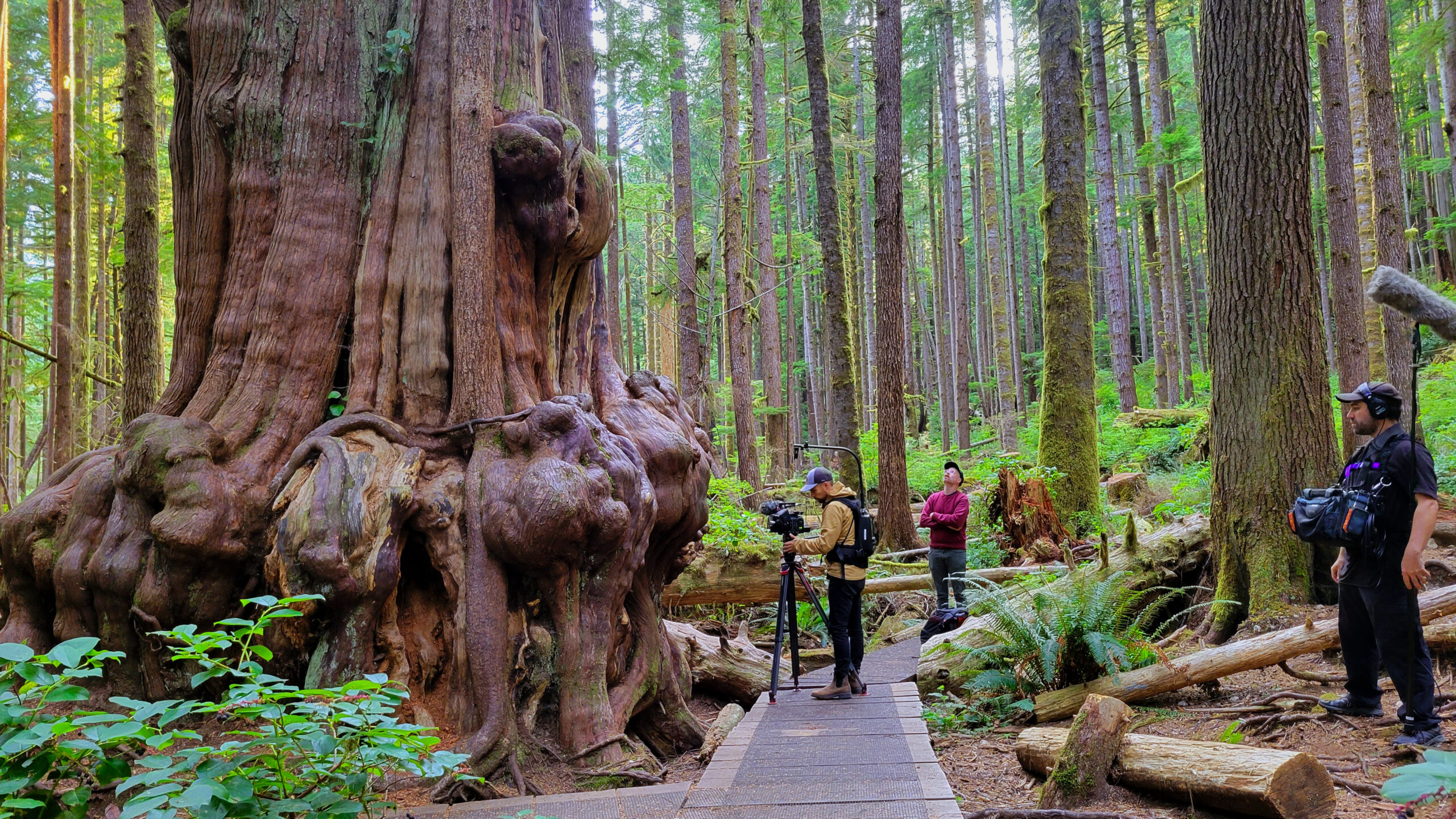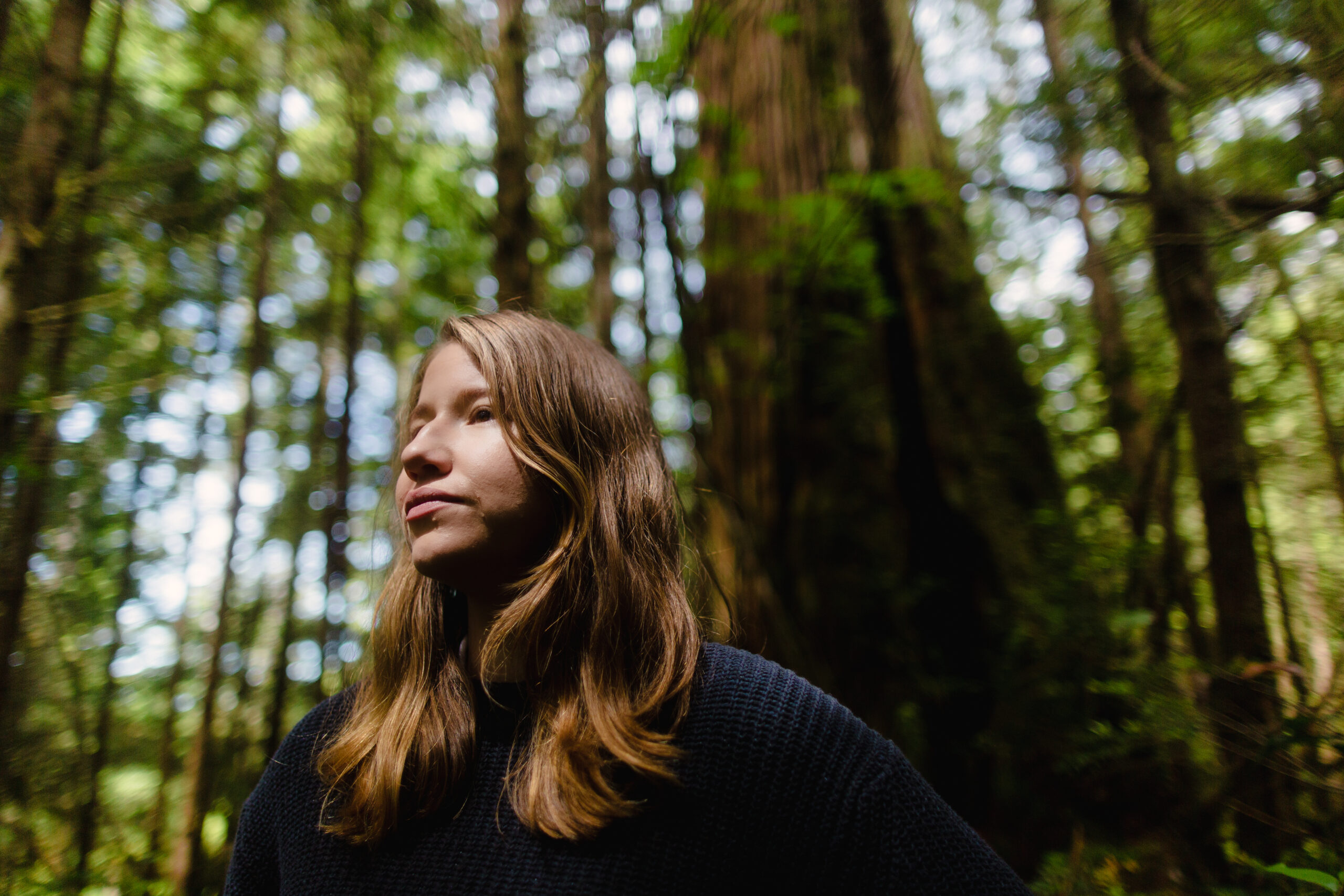
‘Afraid of the water’? Life in a city that dumps billions of litres of raw sewage into lakes and rivers
10 billion litres of sewage are dumped into Winnipeg’s lakes and rivers each year. Some...
In the spring of 2022, Steph Kwetásel’wet Wood, a reporter for The Narwhal, got an unexpected email. A film production company wanted to know if she’d be willing to work on a documentary based on her reporting on how Clayoquot Sound’s War in the Woods transformed Nuu-chah-nulth homelands.
In 1984, Nuu-chah-nulth nations famously turned away logging company MacMillan Bloedel, which planned to clear cut old-growth forests — some of which were more than 1,000 years old. In the decade that followed, there was a series of blockades and protests demanding better logging practices and meaningful consultation with First Nations.
At the time, it was the largest act of civil disobedience in Canadian history. Thousands of people travelled to the remote region of Tofino, B.C., with the anti-logging fight peaking in 1993 when more than 800 people were arrested. (In 2021, on-going protests at Fairy Creek, on southwestern Vancouver Island, surpassed the War in the Woods as the largest act of civil disobedience).
Now, nearly 30 years later, this story is examined in a new episode of the CBC series, The Nature of Things, airing March 17. Produced by Makwa Creative and Antica Productions and narrated by Wood, the film War for the Woods shows how First Nations are voicing their sovereign rights over their territories and finding ways to protect ecologically and culturally important forests.
The documentary was co-directed by Toronto-based filmmakers Sean Stiller, also the director of photography and member of the Williams Lake First Nation of the Secwepemc Nation, and Big Cedar Films’ Geoff Morrison, who co-wrote the film.
Stiller and Morrison sat down with me to discuss the importance of telling the story of old-growth logging from Indigenous perspectives.
Geoff: At the core of it is the importance of old-growth forests and we look at it [from] two or three different perspectives. The reason we’re hearing so much about old-growth forests in the news is because there is so little growth left, and it’s been scientifically proven that these forests are critical to the planet storing carbon. I think what we tried to do with the film is look at it from another perspective as well. To show that there’s more than just the ecological value, but there’s a cultural value to these forests as well.

Sean: To some extent, the impetus for this episode being commissioned is that we are now in the thirtieth anniversary of the Clayoquot Sound protests, which of course we allude to in the beginning of the episode. So there’s a timeliness to that historical event, and then using that as a launching pad for more contemporary conversation. We took an opportunity to talk about things like conservation financing, which particularly among the central Nuu-Chah-Nulth nations has become quite a strong push, in terms of how they move past logging, but in a way that allows the nations to provide economic opportunity to their band members rather than just leaving them empty handed. Our focus was to spend time talking about these solutions, versus simply being on the front lines with largely non-Indigenous people who were opposed to old-growth logging.
Sean: We see things from a very different perspective, and I think when you’re working with an Indigenous production company, you don’t have to fight for that perspective, it’s sort of built in. It also works its way in a lot of other aspects of production. There’s a built-in understanding that you take the time you need, you take the care you need to address these things in a good way. Things like really generous honorariums and ensuring medicines are being offered to participants, these are all just givens with an Indigenous production company. Things that historically non-Indigenous companies might have had missteps around. You can assume a certain amount of nuance and sensitivity working with an Indigenous production team.
Geoff: For me, it was a great privilege to be able to work with this team on this project and to be able to have a part in telling a story like this from that perspective. There’s so much that’s spoken about in the film that someone from a settler background like myself, might not naturally understand or maybe gravitate towards.
Sean: The initial motivation to reach out to Stephanie was that she wrote a retrospective on what was going on in particularly Tla-o-qui-aht territory. The Narwhal themselves were interested at one point in wondering what’s happening now, post the Clayoquot Sound 1993 resistance. She already had spent time building relationships working in that territory. She had also done some work in the Ahousaht First Nation that we visit briefly. So, there was this template, this long-form article she had written — which was really lovely — which laid out a lot of what we wanted to talk to, and she had already met people like Joe Martin and Saya Masso, the natural resources manager. I had a chance to meet with her and then we had subsequent phone chats, she expressed a lot of interest. We felt like it was a really fresh perspective to see things through her eyes. The Nature of Things, because David Suzuki is stepping away from the show, [CBC] was really keen to see a fresh face, to have a different point of view. So, all those things kind of conspired together and it just felt like a really great way to enter this story.

Geoff: [The documentary] touches on a lot of the themes that are present in her reporting, and a lot of her individual interests as a reporter. Looking at new models of conservation, like [Indigenous Protected and Conserved Areas], guardian programs. There’s a lot that just really seems to naturally align.
Geoff: I think one of the things the film tries to do is look at it really from the perspective of the Tla-o-qui-aht and the central Nuu-Chah-Nulth nations. Their story was not as loudly remembered as much in the history, but things really did change for them in terms of gaining control of their forests and how those forests would be logged over the coming years. In a broader sense, from my view, I’m not sure much really changed in terms of the debate on clear cutting and old-growth logging, because here we are 30 years later and we’re still fighting to protect what old-growth remains.
Sean: Perhaps what’s changed somewhat among these nations is a much more robust conversation, or maybe confidence, around questions of sovereignty and of really taking charge of stewardship of the territory. The Tla-o-qui-aht, the Ahousaht and the Hesquiaht have all articulated very clear land-use decisions, very ambitious land-use visions for how they want to steward their territories. These days, there are also outside partners who are incentivized to protect these pristine ecosystems, effectively buyout [Indigenous nations’] tree farm licences so that they’re economically incentivized to not log but have other viable economic paths forward. That feels like a very new conversation.
Geoff: Something that we observed from speaking to people in this film is the Indigenous approach to conservation is much more rounded. There’s a lot more to it, and I think that is much more based on this historical relationship to the land. Hundreds and thousands of years of stewarding the land is what is informing these decisions about how the land should be stewarded today and I think that’s something that’s really exciting about new models of conservation.
Sean: The Nuu-Chah-Nulth people, as do most other Indigenous nations, have their natural law and have systems of knowledge based on observation over many hundreds of years, and when there’s a resistance to logging it’s not out of some purely emotional connection to the forest, it’s because they understand very well that birds migrate in their territory at a certain time of the year. There are other very sound ecological reasons to restrict certain activities at certain times, or to only focus on certain regions and that comes out of carefully fought for scientific knowledge, in some cases, knowledge that [western] scientists themselves are just arriving at.
Sean: On a personal level, I seem to be drawn to projects that have at their core some relationship to the natural world and human culture, and where those two overlap. And particularly in an Indigenous context, I just find myself drawn to the importance of the stories, especially today. This for me, is one project, among other projects, that I feel deeply passionate about.
Geoff: It’s a very complicated and important story, and I think the privilege to come at it and look at it from a slightly alternative perspective and really focus on the importance of these trees, not just for their ecological value but also the value to Indigenous culture, I think is really what gives this piece a real heart. I’m hoping that’s the message that the audience leaves with and it was a really wonderful experience to be able to play a part in that.
This interview was edited for length and clarity. You can view the film here.
Get the inside scoop on The Narwhal’s environment and climate reporting by signing up for our free newsletter. On a warm September evening nearly 15...
Continue reading
10 billion litres of sewage are dumped into Winnipeg’s lakes and rivers each year. Some...

Court sides with Xatśūll First Nation, temporarily halting Mount Polley mine waste expansion

Break out the champagne: Emma’s storied life and leadership in journalism has earned her the...
